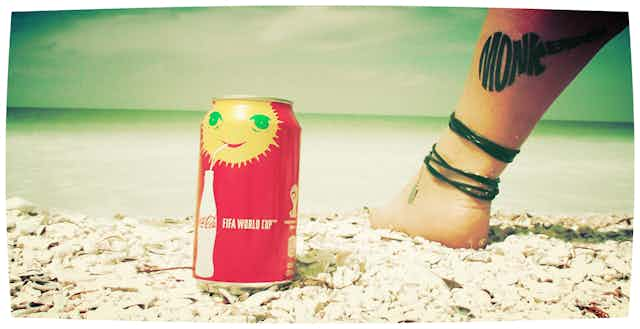The 2014 World Cup has already seen a significant volume of Twitter conversation across a number of (English language) keywords, including #joinin, #worldcup, #Brazil2014 and #worldcup2014, as well as the Twitter-marketed international hashtags:
- #Brasil2014 (Spanish)
- #Brésil2014 (French)
- #wm2014 (German)
- #Copa2014 (Portugese)
- #mm2014 (Finnish).
And unsurprisingly, riding this wave of hashtags are the brands that look to profit from the tournament – whether they’re official sponsors or not.
With the launch of a new interface designed to promote World Cup discussion, Twitter is actively encouraging users to flag support for their national team and to participate in World Cup discussion through Twitter.
On the opening day of the games Twitter presented a new layout, as well as a step-by-step process encouraging people to tweet their support for their team and change their profile image:
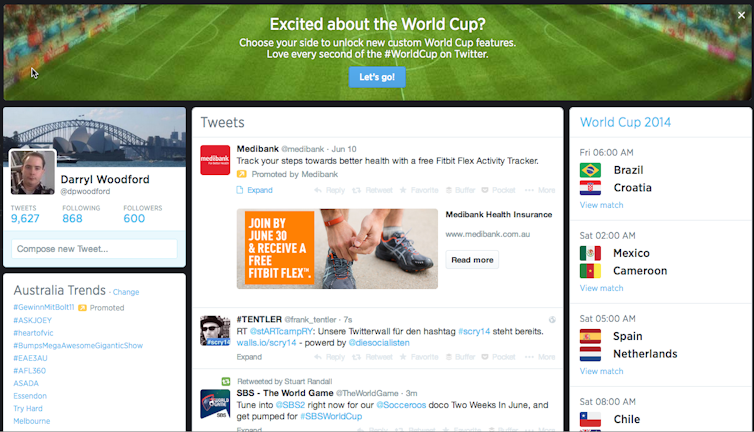
After clicking “Let’s go!” on the page above, users are escorted through a number of personalised set up pages; from selecting their national team and changing their profile picture:
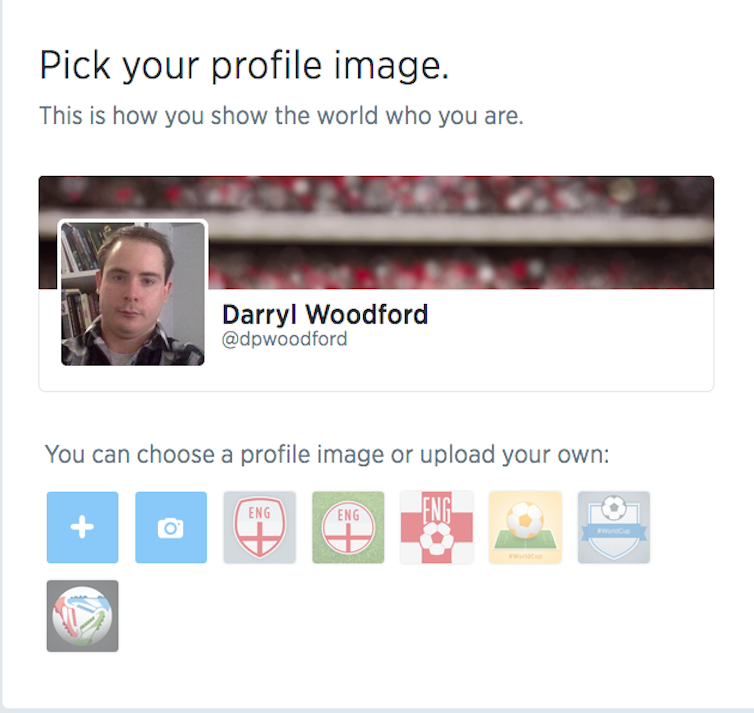
… through to following favourite players, and even preparing a tweet using the #WorldCup hashtag and the account of your national team:
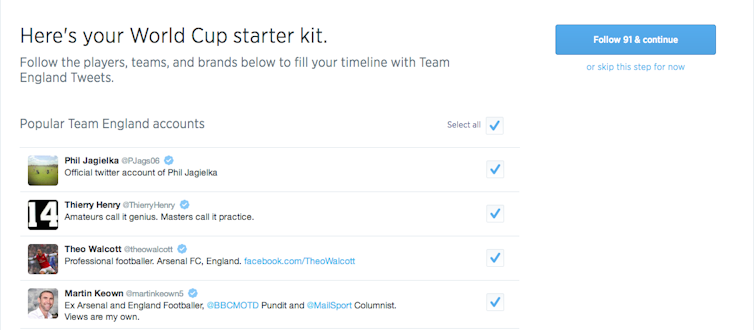
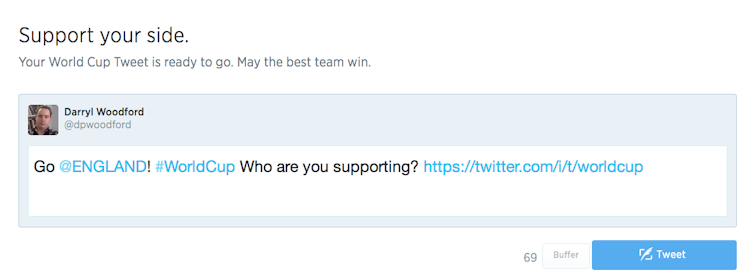
While these are obvious promotional tools, they have likely contributed to the increase in followers for many players, as well as the Twitter activity around the tournament in general.
While the BBC’s Gary Lineker on Tuesday described Brazil 2014 on air as “the first social media world cup”, South Africa 2010 also saw plenty of social media activity. However the impact of social media on traditional media coverage is particularly prominent in the UK at the moment.
Twitter has also been documenting the tournament through its blog and tweets from the TwitterData account. For researchers, replicating such analysis is difficult as World Cup-related tweets frequently exceed the limit of 1% of tweets that be freely accessed through the Twitter API. Despite this, there are a few notable stories from week one.
Brands seek to capitalise on World Cup audience
While it’s clear that the World Cup is a brand marketing exercise, the lead up to the tournament demonstrated how the brand is being appropriated for marketing purposes on social media, far beyond the official sponsors.
And while using the World Cup brand in traditional media may see offending companies hit with a lawsuit, using the social media hashtag appears to be a risk worth taking.
FIFA have not taken trademark infringement lightly either, officially releasing a warning in March stating that
The contribution of FIFA’s commercial affiliates is vital to the success of the 2014 FIFA World Cup and we therefore ask companies to refrain from attempts to free-ride on the huge public interest generated by the event.
Yet according to Alex Benady from PR Week:
FIFA, players, the media, the FA and other national associations, and of course brands with no contractual relationship with the World Cup, will all be working their social media networks for all they are worth.
Supporting this, the 20th most popular retweet in the week leading up to the World Cup using English keywords was the following from (unaffiliated) British company Fragrance Direct:
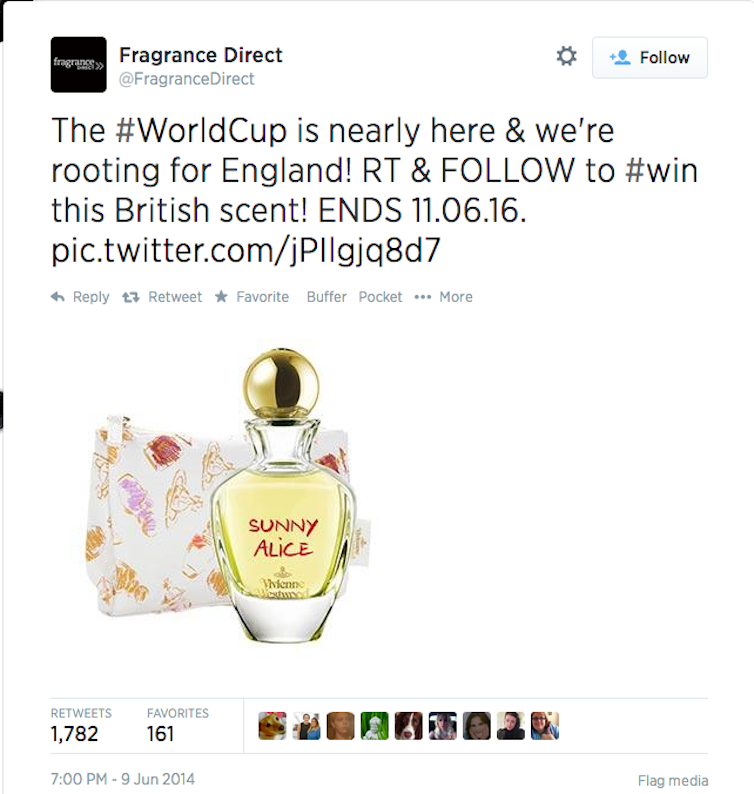
Other brands, sponsors and otherwise are also heavily represented in the most frequent retweets:
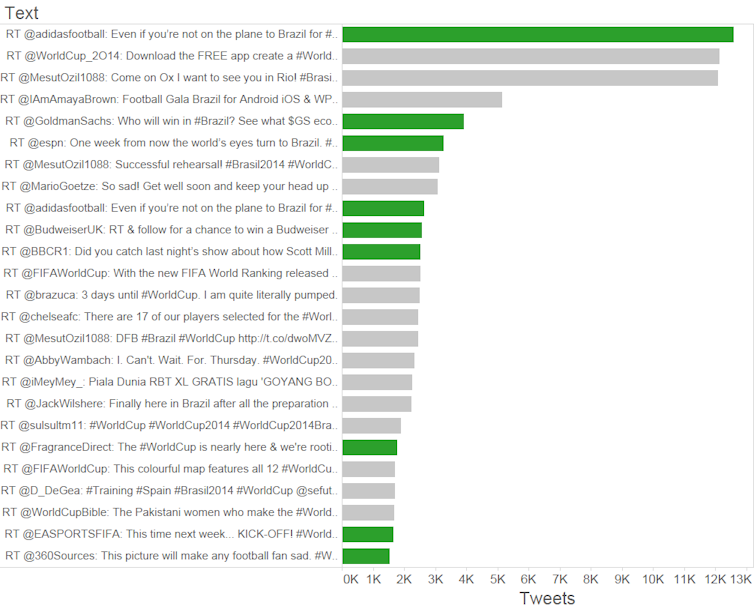
The top 25 tweets above contain many brands (including FIFA sponsors such as Adidas, Budweiser and EA Sports, as well as non-sponsors such as Goldman Sachs and Fragrance Direct), able to associate with the World Cup brand on social media on an equal basis.
While the brands may see this as merely interacting with a current event, for those at FIFA and for paying sponsors, this may well appear as ambush marketing.
Such trends extended into the first week of the tournament, with the top retweets over the first week notably also dominated by big brands and television networks:
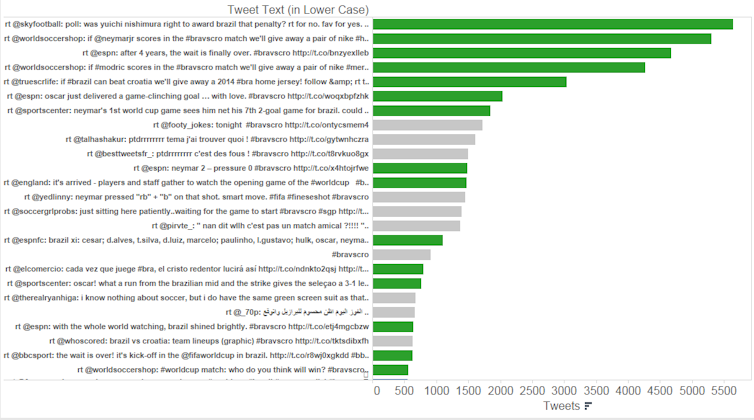
Top 10 matches
With the first round underway, we can also see which matches (and teams) are receiving the most attention on Twitter:

This tells an interesting visual story of not only the top matches but also how the worldwide audience is using Twitter during the World Cup.
While the top match to date is (perhaps predictably) the opener of the tournament – Brazil vs Croatia – the presence of England vs Italy as the second may speak both to the audience participating in the hashtag conversation and the international interest in the game itself.
As the tournament continues, it will be interesting to correlate tweet volume with television audiences worldwide, as those figures become available, and to consider whether the teams with the most historic World Cup success, or FIFA Ranking, are those receiving the most attention this time around, both on Twitter and on television.
Other stories from around the web
Elsewhere on the web, analysis of both social media and statistical data around the world cup is gathering steam. Kimono Labs have launched what they claim to be the first open World Cup API, while the Regressing Blog on Deadspin features a round-up of the top prediction models on the web.
Also of interest this week is the CartoDB visualisation of Twitter activity around the World Cup opening match, and Twitter’s own visualisation of the increase in Neymar’s followers, part of their extensive coverage of the opener which also includes the Predictaroo.
We’ll be back after Round 2 with some more from the ground in Europe and Brazil, as well as the latest data from our Twitter Machines, and a look at how TV stations are using Twitter in the early stages.

